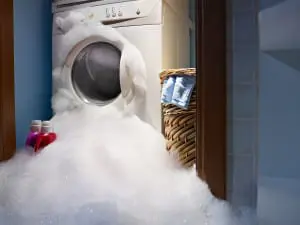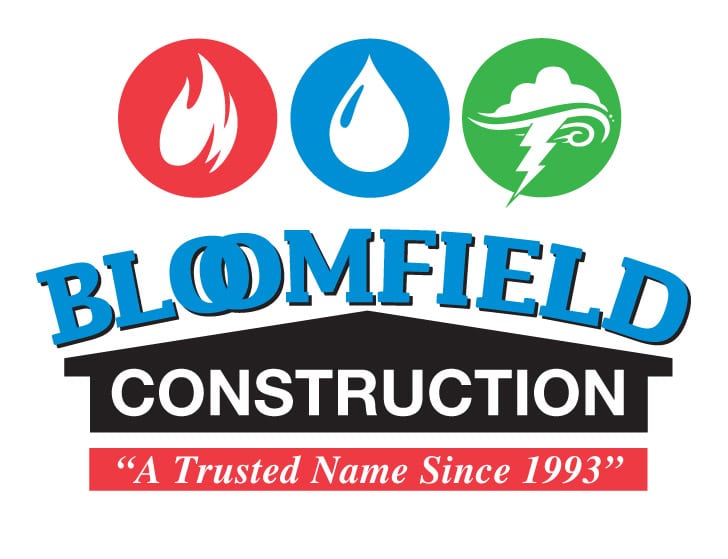 It’s like the scene from a movie – the overflow of bubbles pouring from your washing machine, covering the floor and seeping into any materials close by. Sometimes overflows occur because of regular wear and tear to the machine while other instances are from a lack of simple system upkeep. Following a few best practices can decrease your risk of appliance problems. Even so, malfunctions do occur.
It’s like the scene from a movie – the overflow of bubbles pouring from your washing machine, covering the floor and seeping into any materials close by. Sometimes overflows occur because of regular wear and tear to the machine while other instances are from a lack of simple system upkeep. Following a few best practices can decrease your risk of appliance problems. Even so, malfunctions do occur.
An overflowing washing machine can be an unfortunate part of adulthood. But, we have a few pointers to keep you better maintain your appliance. And, we’ve even included a few pointers on identifying and correcting the cause should an overflow occur.
5 Must-Dos to Prevent an Overflowing Washing Machine
Regularly Clean Standpipe and Drains
Over time, lint, dirt and debris can clog the washing machine’s drainage system. For some washing machines, a simple lint trap can help eliminate this issue. Check your owner’s manual for insights on what the manufacturer suggests to clean the pipe and drain clear of clogs.
Don’t overfill the washing machine
It can be tempting to shove as much laundry in as you can possibly fit. Less loads of laundry you have less loads to do, right? Ultimately, it’s not a time saver because your clothes typically don’t get as clean. Plus, it can result in other problems. Putting too much in your washing machine can actually cause unnecessary stress on the machine, and ultimately risk an overflowing problem. Over stuffing clothes can skew fill censors or even break the agitator, both of which can lead to an overflow.
Install Standpipe at the Appropriate Height
This height is dependent on the specific make and model of your appliance. Typically, machines require the standpipe to be at a height of 36 inches or higher. If the standpipe is not accurately installed, it can cause overflow or backflow.
Use the Right Detergent
High-efficiency washing machines often require a specific detergent. These specialty detergents reduce the amount of suds and bubbles that are produced, and decrease the risk of overflows.
Register the Machine with Its Manufacturer
Though rare, sometimes washing machines experience faulty equipment that are a part of a recall. Registering your appliance with its manufacturer keeps you informed of recalls that could potentially cause problems.
 Overflowing Washing Machine Tricks and Tips
Overflowing Washing Machine Tricks and Tips
Turn off the power
Overflowing or standing water can be dangerous when met with electricity. Pressing the washer’s cancel button is not enough to avoid the risk. Additionally, the outlet plug may have been exposed to water. The best route is to cut the power off at the circuit breaker or fuse box until you’ve cleared the area of standing water and understand if it’s safe to have electrical near the problem area.
Additionally, if you turn the power off and the overflow continues occurring, it could be an indication that there is a defective water inlet valve. In this instance, you will need to replace the valve and it’s typically an easy, inexpensive fix.
Check the Water Pressure
Low water pressure can cause water overflow. Typically, the water inlet valve needs at least 20psi to properly turn off. Without meeting this minimum, the valve may fail to properly shut off and allows water to leak.
Ensure the Drain Hose Is Fully Functional
This is often the easiest fix when experiencing an overflowing washing machine. Drainage from the washing machine can sometimes fill the drain hose with unwanted materials, and backs up the water’s escape route. Carefully pull the washer away from the wall to gain access to the hoses. Disconnect the drain hose and ensure it has free flow. This can be as easy as blowing in the pipe and releasing the stuck blockage.
Additionally, check to make sure the drain hose is free of cracks of worn areas. Submerging the hose in water can help you identify small holes. Seal one end with your hand, blow in the hose and watch for bubbles. If the hose has a lot of wear, seal the holes or replace the hose entirely.
Call Your Home Owners Insurance
Sometimes, the damage from an overflowing washing machine requires professional clean up and drying of your structure. If necessary, give your home owners insurance agent a call. Luckily, these types of repairs are typically covered as “sudden and accidental” in homeowners’ insurance policies. Minus your deductible, insurance should cover the structural drying and resulting damage.
Have you experienced an overflowing washing machine? If your home has suffered damage from water overflow, Bloomfield Construction can help! Our team will work directly with your insurance adjuster to take your home back to pre-loss conditions. This always includes ensure your home is dried out properly and safe from the risk of microbial growth.
Contact Bloomfield Construction


 Overflowing Washing Machine Tricks and Tips
Overflowing Washing Machine Tricks and Tips

